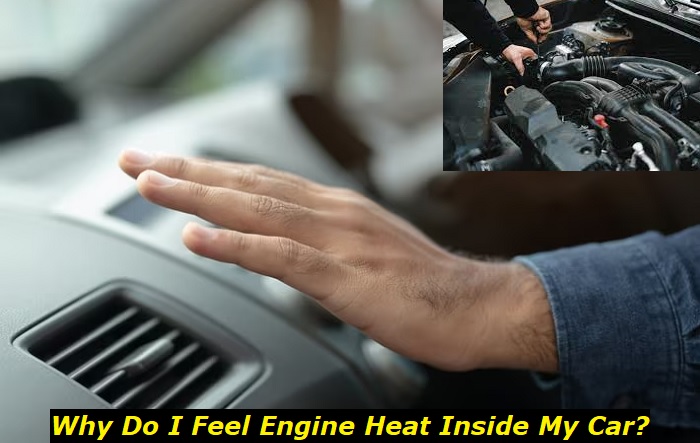Has your vehicle's engine been acting more like an oven of late? No one wants their vehicle's engine to bake them through whenever they turn on their car. Though some warmth in the front of your passenger cabin is to be expected, particularly if the weather is extremely hot or if you are on an especially long drive; it is important to know the safe threshold.
Engine overheating highlights
- Level of urgency:very high
- Commonreasons:low coolant, thermostat problems, coolant blockage, radiator fan problem
- DIY diagnostics:possible but complicated
- DIY repair:impossible
- Price of repair:$300 - $650
- Time for repair:3 - 6 hours
- If ignored:engine failure, low performance, cooling equipment damage

Why the Cooling System is the Main Culprit
Your engine performance is linked to its ability to shed off excess heat efficiently. This is where your car's cooling system comes into play. Your thermostat, radiator, water pump, and coolant work alongside your engine to soak up, transport, and dissipate excess heat into the atmosphere.
When all these elements are working well together, they will balance the heat and ensure the engine does not overheat. This balance is key to achieving peak efficiency, guaranteeing your parts do not undergo excess wear and tear, and also maintaining comfort in your passenger cabin.
If this heat is finding its way into the passenger cabin, the cooling system is first in the suspect lineup. Unfortunately, if your cooling system is compromised, it is capable of causing much more trouble than overheating your passenger cabin. Whenever a mechanical fault in one of the cooling system elements disturbs this balance, your engine begins running hotter the longer the issue is neglected.
Eventually, the heat will affect your engine health so much that it will find its way into your passenger cabin and threaten to ruin your driving experience. The problem could lie anywhere between your radiator, thermostat, and water pump. Here are various cooling system malfunctions that may have made it hotter than necessary under your hood:
- Water pump failure causes an insufficient amount of water to flow against the engine system causing it to heat up.
- A leaking radiator hose will cause a coolant leak between the pump, radiator, and engine. Insufficient coolant levels will result in the engine overheating.
- A malfunctioning thermostat will fail to open and close as expected. This starves the engine of the amount of coolant necessary to regulate its temperature effectively.
- A defective temperature gauge will offer inaccurate readings of engine temperature. As such, you may not know that your engine is overheating until you have to pull over on the side of the highway.
Other Causes of Excessive Heat in Your Passenger Cabin
Your cooling system is not the only suspect. There could be other elements behind the searing heat in your car. Consider these less likely causes that only manifest after the engine overheating has been allowed to proceed unchecked for too long.
1) Worn Out Heat Insulation
Your heat insulation plays a vital role in ensuring the heat generated in the engine does not penetrate the interior. Degradation of your heat insulation does not happen overnight. It progresses slowly due to normal wear and tear, physical damage, or constant exposure to high temperatures when your cooling system begins to fail. As the heat insulation's degradation worsens, the heat in your passenger cabin will become impossible to ignore.
2) Dislodged or Degraded Heat Shield
Your heat shield works alongside the insulation to ensure the enormous amounts of heat generated in the engine do not turn you into a baked good every time you get behind the wheel. The metallic heat shield is placed in a strategic location to deflect excess heat away from the cabin.
Drivers can easily tell when their heat shields are damaged because they often make a telltale rattling noise whenever start the engine or attempt to accelerate. If your car cabin temperature was perfectly fine one day and unbearable hot the next, chances are high that the problem is isolated to a dislodged heat shield.
3) Signs of a Faulty Cooling System
If the heat in your passenger cabin is accompanied by some of the following issues, the cause is most undoubtedly a defective cooling system.
- Engine overheating or failing to start
- Smelling antifreeze while you drive
- Blinking check engine light
- Coolant leaks evidenced by wet patches under parking spots or constantly needing to refill your coolant
- Coolant that has darkened from its original yellowish-green color due to contamination
- Temperature gauge fluctuation
- Reduced gas mileage
How to Troubleshoot and Fix Engine Heat in Car Cabin
Now that you have a clear understanding of what is happening under your hood, we can delve into the possible solutions. It is always best to entrust car repairs to your dealership or a licensed and insured mechanic who has experience fixing similar vehicles.
1) Inspect the Cooling System
Troubleshooting begins with the most obvious suspects. Check your car for a check engine light, engine error code, visible coolant leaks, and temperature gauge fluctuations. Listen for any unusual noises that could indicate a failing water pump.
Next, pop your hood and check whether your radiator has any signs of damage or blockage. Check whether your coolant levels are optimal and top up if necessary. If the coolant appears to be contaminated, you will need to drain it and refill it.
Inspect the radiator for any visible blockages or damage, and ensure the coolant is at the appropriate level and not contaminated. If all these tests yield no results, you are best off consulting a professional who can accurately diagnose the issue and perform the necessary repairs or replacements.
2) Replace Your Heat Insulation
Inspecting your vehicle's heat insulation is easier said than done. It is neatly tucked under the carpet and in the paneling. If your car's heat insulation has seen better days, you will need to replace it. You cannot get by on heat insulation that has suffered extensive wear and tear or damage. Replacing a vehicle's insulation is a laborious process that takes a decent amount of skill. Even avid DIYers prefer to leave this back-breaking task in the hands of well-experienced professionals.
3) Replace or Repair Your Heat Shield
If the cause of the heat is a damaged heat shield, only a professional can figure out whether the damage can be fixed by repairing it. At times, especially when the damage has gone unchecked for a while, the only course of action is to replace the heat shield. Like heat insulation replacement, heat shield replacement is a tad too advanced for most DIYers.
Your heat shield is likely located in a tough-to-reach spot. This will only hamper your repair or replacement efforts. Professional mechanics have all the tools necessary to access and repair or replace your heat shield.
How to Avoid Mechanical Issues that Cause Excess Heat in Your Car
Once you solve the pesky problem, it would be beneficial to learn how you can ensure you do not find yourself in the hot seat again. These preventive measures will help you keep the problem at bay:
- Sticking a servicing schedule will ensure your car is tended to by professionals with an eye to catch trouble before it inconveniences you.
- Have a maintenance schedule that includes routine cooling system checks. This includes checking for coolant leaks, inspecting coolant levels and purity, checking the radiator for blockages, and listening for noises that suggest your water pump is faulty.
- Inspect your car's heat shield and insulation regularly. If these checks are too much for you, ensure that your mechanic gives these elements the thumbs up whenever you take your vehicle for servicing. The earlier signs of damage or wear are detected, the cheaper and easier they will be to fix.
- Repairing mechanical damage as soon as you catch on to it is another way to ensure your passenger cabin does not suffer hellish temperatures. Drivers who ignore engine overheating until it becomes severe are more likely to ruin their heat shield and insulation.
Conclusion
Abnormal heating of your car's passenger cabin is a symptom of severe engine malfunction. It is wise to get your car accurately diagnosed by a professional as soon as the problem becomes apparent. Do not drive your car while the problem persists because every mile is hammering a nail into your engine's coffin.
Licensed and insured mechanics will have no trouble narrowing down the cause of your misfortune. You can also rely on them to offer objective advice on whether repair will work, or whether replacement is your best option.
About the authors
The CarAraC research team is composed of seasoned auto mechanics and automotive industry professionals, including individuals with advanced degrees and certifications in their field. Our team members boast prestigious credentials, reflecting their extensive knowledge and skills. These qualifications include: IMI: Institute of the Motor Industry, ASE-Certified Master Automobile Technicians; Coventry University, Graduate of MA in Automotive Journalism; Politecnico di Torino, Italy, MS Automotive Engineering; Ss. Cyril and Methodius University in Skopje, Mechanical University in Skopje; TOC Automotive College; DHA Suffa University, Department of Mechanical Engineering






Add comment